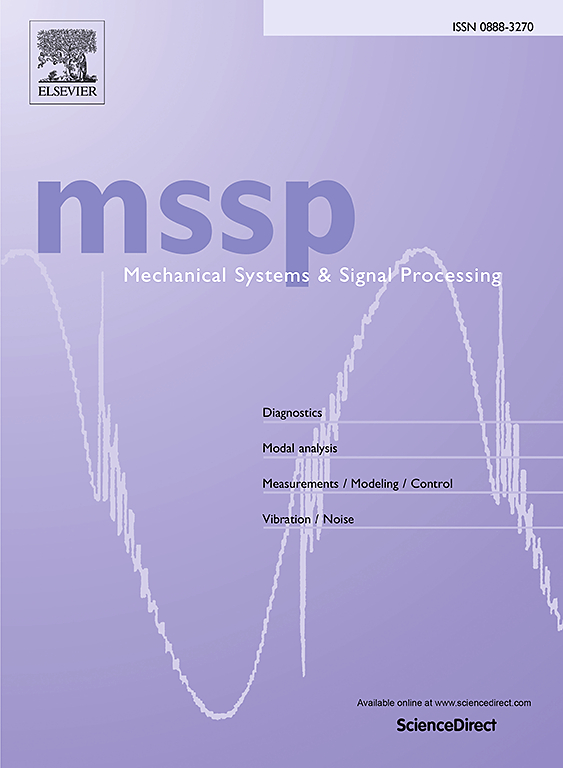Numerical and experimental investigation of internal micromotions in Gerotor units considering contact mechanics and lubricating interfaces
IF 7.9
1区 工程技术
Q1 ENGINEERING, MECHANICAL
引用次数: 0
Abstract
This paper presents a numerical approach for evaluating the performance and the micromotions of the rotors in a Gerotor unit, accompanied by an extensive experimental activity aimed at validating this approach. The simulation model begins with a geometrical module that preprocesses the CAD drawings of a given unit. The model then performs a fluid dynamic analysis using a lumped-parameter formulation to solve for the pressures inside properly defined control volumes within the unit. The fluid dynamics is solved simultaneously with the planar motion of the inner and outer rotors using Newton’s law of motion. The body motion solution is coupled with the solution of the lubricating interfaces surrounding the rotors, which is based on the Reynolds equation. Contact dynamics formulations and elastohydrodynamic relations are applied at the contact locations, considering the possibility of multiple contact locations between the two rotors. An experimental test setup was purposely built within this research to quantify the micromotions of the outer rotor, along with basic measurements of torque and outlet flow. The comparison between simulation results and experimental data shows a good match in volumetric, hydromechanical, and radial motion prediction with an accuracy of 0.9%, 2%, and 2.5% respectively. The proposed methodology gives detailed insight and understanding of the behavior of the rotors and can be used to improve the current design and evaluate new concepts.
考虑接触力学和润滑界面的转子单元内部微运动的数值和实验研究
本文提出了一种数值方法来评估Gerotor单元中转子的性能和微运动,并伴有广泛的实验活动,旨在验证这种方法。仿真模型从一个几何模块开始,该模块对给定单元的CAD图纸进行预处理。然后,该模型使用集总参数公式进行流体动力学分析,以求解单元内适当定义的控制体积内的压力。利用牛顿运动定律求解内外转子平面运动时的流体动力学问题。体的运动解与转子周围润滑界面的解相耦合,该解基于雷诺方程。考虑到两转子之间可能存在多个接触位置,在接触位置处应用了接触动力学公式和弹流动力学关系。在本研究中特意建立了一个实验测试装置,以量化外转子的微运动,以及扭矩和出口流量的基本测量。仿真结果与实验数据的比较表明,体积学、流体力学和径向运动预测结果吻合较好,预测精度分别为0.9%、2%和2.5%。所提出的方法给出了转子行为的详细见解和理解,可用于改进当前的设计和评估新的概念。
本文章由计算机程序翻译,如有差异,请以英文原文为准。
求助全文
约1分钟内获得全文
求助全文
来源期刊

Mechanical Systems and Signal Processing
工程技术-工程:机械
CiteScore
14.80
自引率
13.10%
发文量
1183
审稿时长
5.4 months
期刊介绍:
Journal Name: Mechanical Systems and Signal Processing (MSSP)
Interdisciplinary Focus:
Mechanical, Aerospace, and Civil Engineering
Purpose:Reporting scientific advancements of the highest quality
Arising from new techniques in sensing, instrumentation, signal processing, modelling, and control of dynamic systems
 求助内容:
求助内容: 应助结果提醒方式:
应助结果提醒方式:


